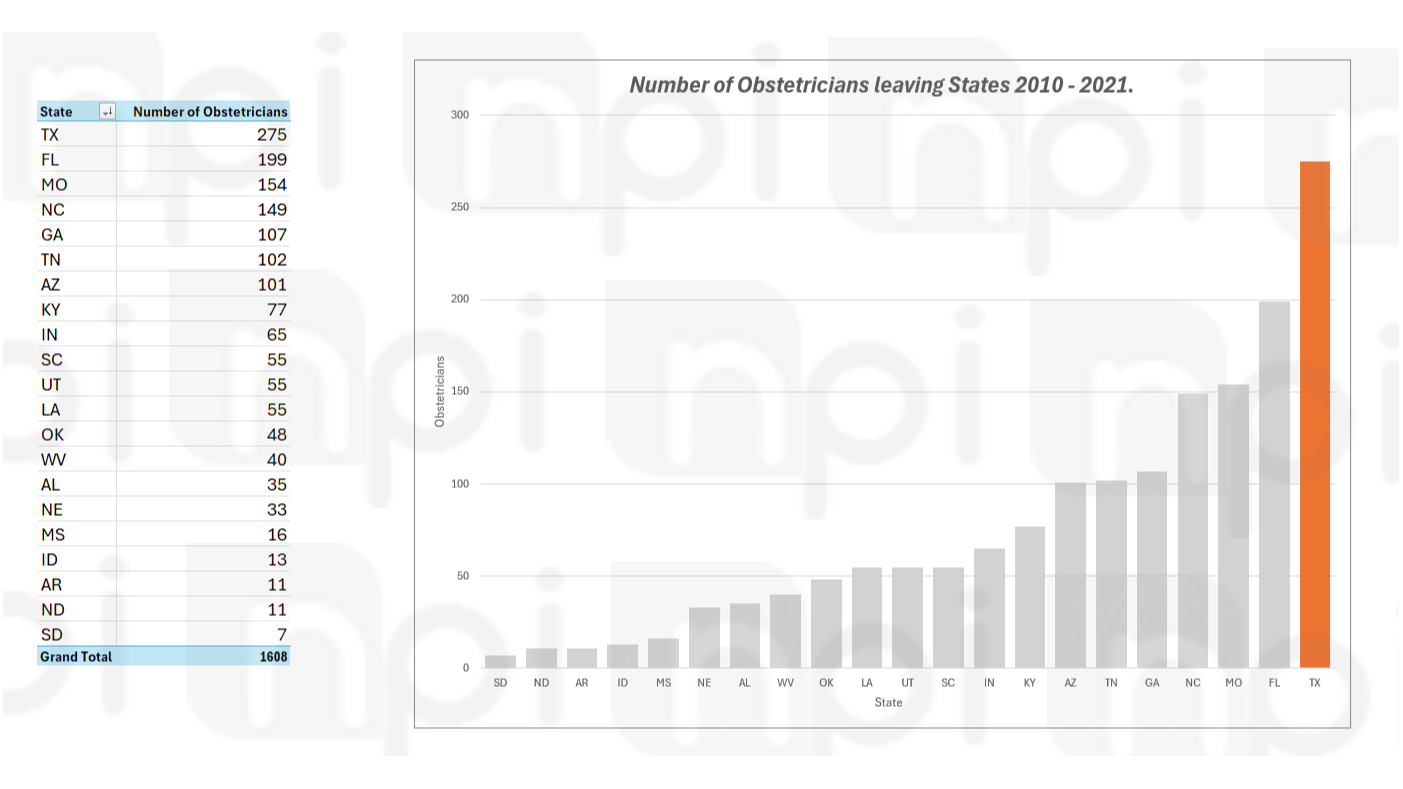Reproductive healthcare in America has changed post-Roe v. Wade, and this is reflected in the migration patterns of obstetricians and gynecologists. NPI Dashboard’s report has the details, including how this affects women across the country.

The overturning of Roe v. Wade in 2022 with the Dobbs decision had a huge impact on abortion access, but what about the broader implications for women’s healthcare? NPI Dashboard’s studied how obstetricians and gynecologists have moved across the country since then, and they found that these trends don’t just affect reproductive care; they reflect new healthcare challenges on the horizon.
Read the full report at https://www.npidashboard.com/obgyn-migration.htm
While many news outlets focused on the impact of the Supreme Court’s ruling on abortion access, very few examined the effects that it would have on women’s healthcare, says NPI Dashboard’s report.
One overlooked result of the ruling is the relocation patterns of obstetricians and gynecologists (OB-GYNs). The numbers provided by the report show that in the period post-Roe v. Wade in 2022 to June 2024, 2,917 OB-GYNs migrated from states with more restrictive abortion laws to states with fewer restrictions. This is a nearly twofold increase from migration rates from 2010 to 2021 when 1,608 OB-GYNs left their states.
In just two years since the Dobbs Decision, nearly 3,000 OB-GYNs moved from their abortion restrictive states, compared to about half the amount from over an 11-year time period before the overturn of Roe v. Wade. That should say a lot about how drastically things have changed.
NPI Dashboard cites several reasons for these trends: First, OB-GYNs have more legal and professional security in states with fewer restrictions on abortion, reducing the risk of penalization.
Workplace climate is also a factor, as restrictive states often foster hostile political, social, and work environments toward women’s healthcare practitioners.
Additionally, a lack of professional fulfillment may prompt OB-GYNs to move, as restrictive healthcare policies may bar physicians from providing their patients with adequate care.
With everything stacked against the practitioners, it’s no wonder why so many have decided to move.
The exodus of OB-GYNs has led to shortages of healthcare providers in less permissive states, resulting in longer wait times for prenatal care, contraception counseling, treatment for gynecological conditions, and other forms of specialized care.
NPI Dashboard notes that rural and underserved areas are disproportionately affected by these changes, forcing women from these localities to travel longer distances for treatment and care. Furthermore, women without access to the appropriate care are more likely to resort to unsafe methods to terminate pregnancies, leading to higher risks of mortality.
NPI Dashboard also notes that the impact of reproductive restrictions on medical education is of concern, as future students may have limited access to abortion training, even in more permissive states. This educational gap is likely to affect the availability and quality of reproductive healthcare across the country, pointing to a dire need to address these issues in order to protect the rights of both practitioners and women in need of care.
While none of this paints a very hopeful picture, there are still things you can do. Staying informed is one of them, and if you want a better understanding of the numbers, you can check out NPI Dashboard’s full report. It goes into a lot more detail and provides tables and graphs of the data for your perusal. Knowledge is power, right?
Visit https://www.npidashboard.com/obgyn-migration.htm to learn more.
